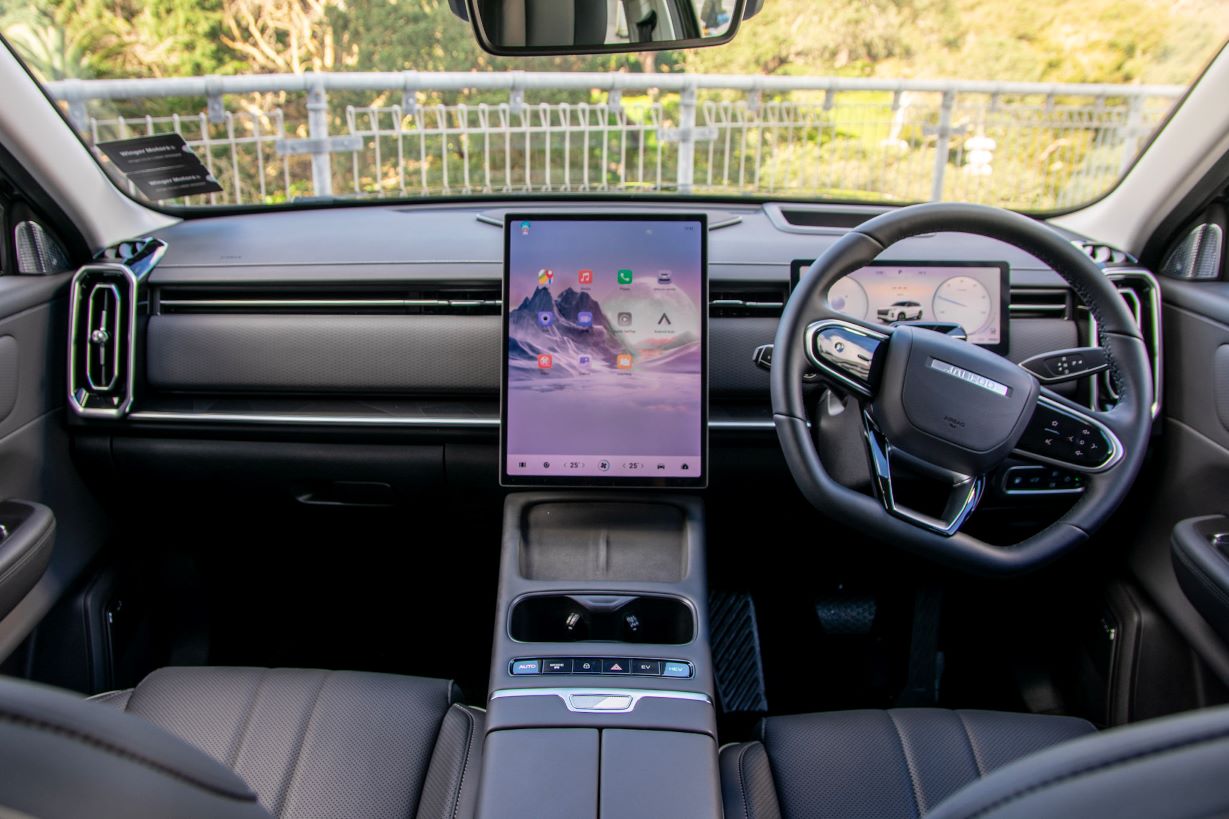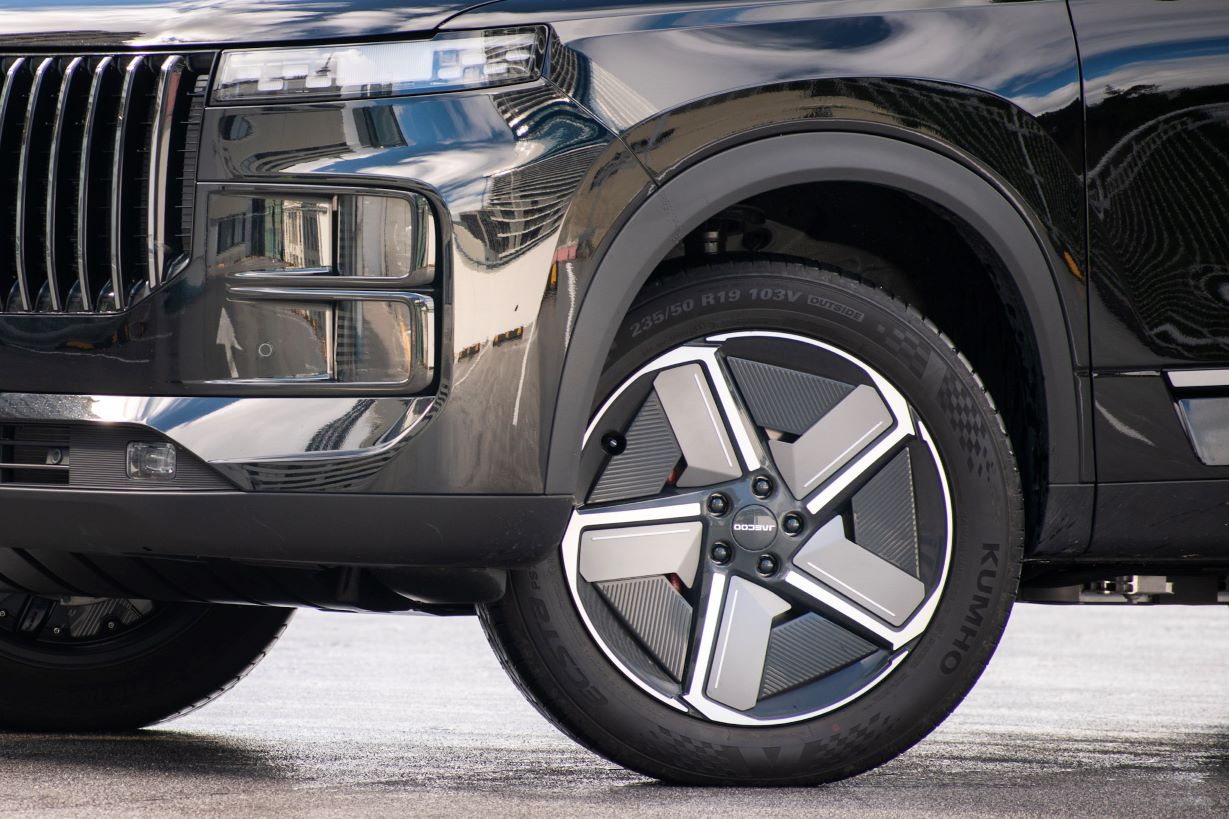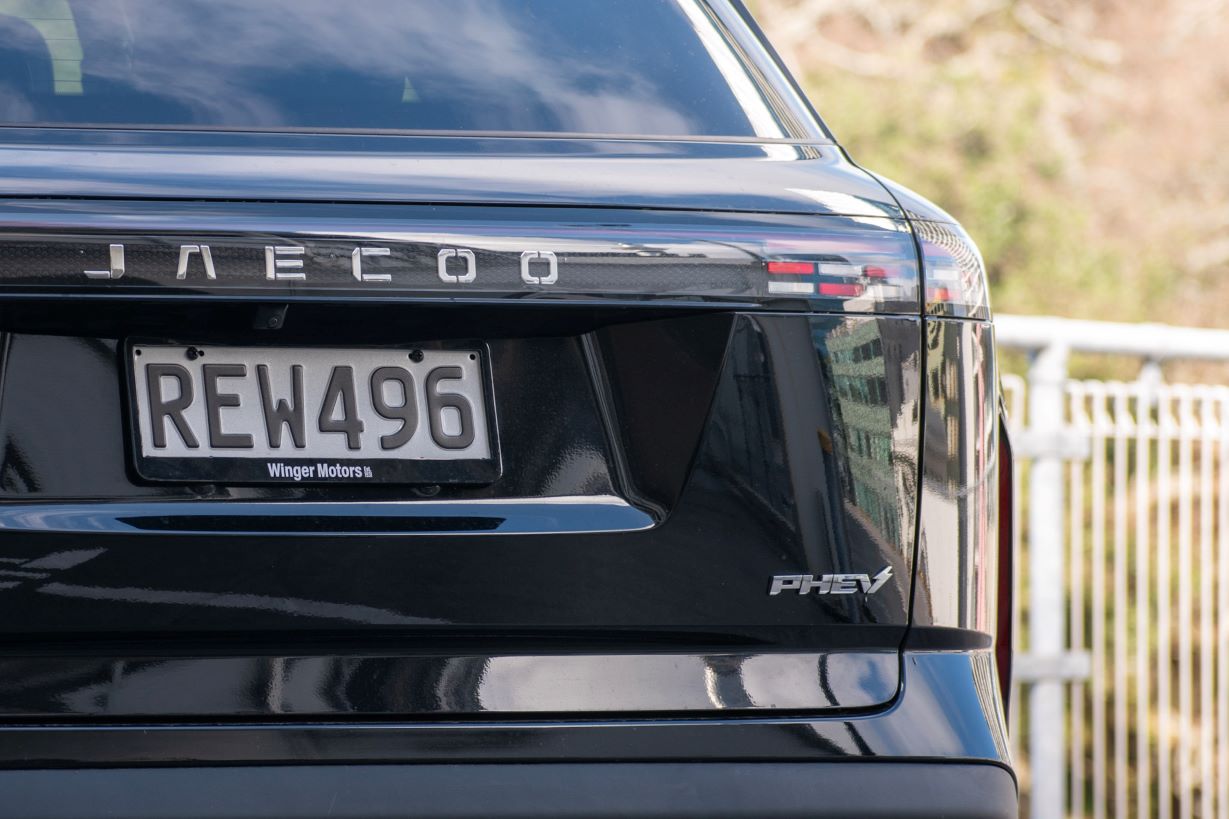
Mercedes-AMG GLC 63 Review
We test drive the Mercedes-AMG GLC 63 S E Performance Coupe on a trip between Napier and Auckland.
15 August 2025
The Jaecoo J7 is a new player stepping into the premium SUV market, seeking to carve out a niche among heavyweight rivals from Europe, such as the Volkswagen Tiguan and BMW X5. The J7 SHS (Super Hybrid System) aims to combine a feature-rich, elegantly designed, long-range hybrid at a price that won’t break the bank.
In terms of design, the J7 bears a striking resemblance to a Range Rover Evoque, featuring a prominent bonnet, a vertical front bumper, and a sloping roofline. Electronic pop-out door handles, narrow LED daytime driving lights, and layered headlights flanking the vertical panel grille all contribute to its luxurious appearance. The similarities are uncanny.
It's no surprise that the J7 gives the impression of a cloned Range Rover, since Jaecoos' parent company, Chinese manufacturer Chery, has operated a joint venture with Jaguar Land Rover to produce Land Rover vehicles in China.

The interior adopts a minimalist design, with most controls managed through a central 14.8" touchscreen infotainment screen. The screen is massive and bright, and although I'm not a fan of touchscreen controls for air conditioning, the graphics are clear and intuitive, making it straightforward to change any settings. The list of standard equipment includes navigation, 360-degree view monitor, Apple CarPlay, Android Auto, and a wireless phone charger with cooling function.
The driver gets a vivid 10.25" LCD instrument cluster and bright heads-up display. The driver assist and safety features can be a tad overbearing; the driver distraction warning goes off when you change the air conditioning temperature or fan speed, and it even went off a couple of times when I was looking ahead. Although it can be turned off, it eventually turns back on.
The interior is comfortable and refined, with both chrome and leather composite trim that feels of high quality and conveys a solid build standard. The seats have both heating and cooling functions and while they don't hug you the way other premium cars do, they are comfortable, which is arguably more important. The eight-speaker Sony sound system sounds crisp and adds a touch of reputation from a familiar company.
The J7 provides sufficient space in the back seat for all three passengers, with reasonable legroom for adults. The boot space is adequate. Although not the largest in its class, it offers a maximum of 500 litres with the cargo cover removed. When the second-row seats are folded down, the capacity expands to 1,265 litres.
Under the bonnet is a conventional 1.5-litre turbocharged petrol motor plus a 150kW/310Nm electric motor. The powertrain can operate in four modes: Fully Electric, Series Hybrid, Parallel Hybrid, and Energy Recovery (regenerative braking). This means the petrol engine not only drives the wheels but also generates power to recharge the lithium-ion battery.
In terms of performance, the acceleration is responsive and smooth with plenty of low-down torque when the petrol and electric motors combine, which tends to peter out as the electric motor takes over solely. You get three drive modes, including Eco, Normal, and Sport, but we failed to notice any difference in the driving experience between the three options.
The 18.3kWh battery is large enough to run the vehicle in full EV mode for 90km (WLTP). Jaecoo claims a total fuel consumption of 1.0L/100km, which gives the J7 SHS a mighty impressive total combined range of 1,200km. Spending a considerable amount of time in Auckland's notoriously slow traffic during our road test, we achieved an average fuel consumption of 5.5L/100km. Still, you might accomplish the coveted 1,200km range if you drove very frugally.

The transition from EV mode to HEV mode is smooth, and the engine activation is nearly silent. The option for the driver to switch between EV and HEV drive modes is an excellent function. However, EV mode is only available when the battery charge is above 30 percent. Charging options include both AC and DC capabilities, with DC fast charging taking 20 minutes to go from 30% to 80%.
The brake pedal is somewhat sensitive; there are a few centimetres of travel that don’t seem to slow the car down before it suddenly brakes with full force, resulting in a jarring stop. The steering is very light which is great for city driving, but once you hit the open road, the vehicle feels hesitant and disconnected, particularly when taking corners.
The J7 SHS boasts a five-star ANCAP safety rating and advanced driver assist features. One notable feature is that the emergency break won’t disengage unless the driver’s seatbelt is buckled. If you forget, you’ll need to put the vehicle back in park, exit, and re-enter to start over. This pre-flight check can be frustrating if you accidentally forget to follow the procedure in the correct order.
With prices starting from $49,990, the J7 SHS appeals to those seeking a well-equipped, superbly designed vehicle that won't break the bank. While it lacks some of the dynamic driving experience of its more expensive rivals, the features contained in the budget-friendly option are more than enough to compensate for it.
| Pros | Cons |
|---|---|
| Premium design and aesthetics at a lower price point. | Inconsistent driving dynamics. |
| Impressive hybrid range and ultra-efficiency. | Overbearing driver-assist systems and warnings. |
| Feature-rich cabin with a Sony sound system. | Limited differences between drive modes. |
